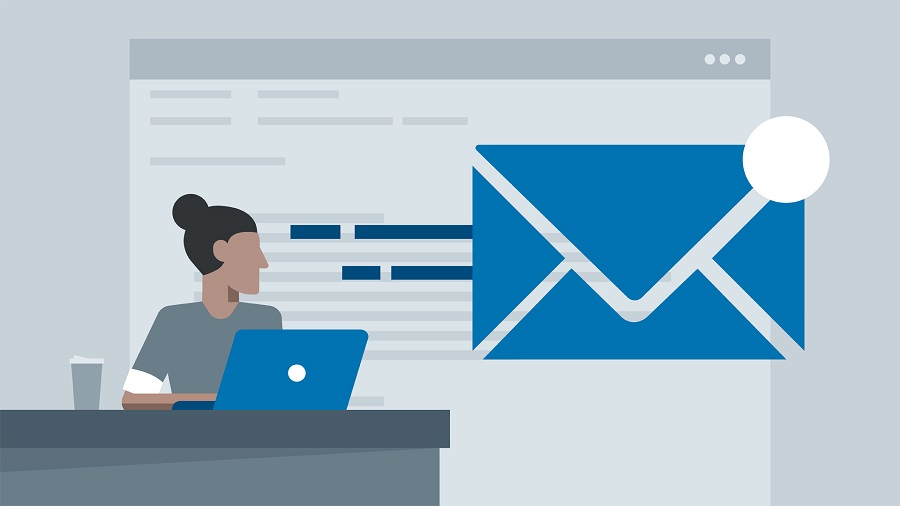Do you want to learn how to use email marketing to get more sales? Email Marketing is one of the cheapest and most effective ways to do digital marketing. It allows you to directly connect with your leads, nurture them, and turning them into paying customers.
What is E-mail Marketing?
According to Wikipedia, Email marketing is the act of sending a commercial message, typically to a group of people, using email.
In its broadest sense, every email sent to a potential or current customer could be considered email marketing. It usually involves using email to send advertisements, request business, or solicit sales or donations, and is meant to build loyalty, trust, or brand awareness.
No matter what you’re selling, email marketing is a way to reach thousands of potential customers directly at a relatively low cost when compared to other forms of digital advertising. It brings your business’ message through an attractive mix of graphics, text, and links directly to people who may be interested in your products and services.
Also Read: 7 Essential Digital Marketing Strategies For Small Businesses.
How to better engage your email subscribers.
When it comes to email marketing, it is very easy to think that having a huge list of email subscribers is great. Well, sure, it’s great if they’re all engaged with your content. Otherwise, you just have a big list of people that don’t have an appetite for what you’re sending out and that could be very frustrating.
Here are few tips to help you better engage your email subscribers and generate more leads.
1. Know your target audience or customers.
Who is your ideal target audience or customer? Identifying who you are trying to target can help you correctly position your brand and your offers. Knowing who you want to target will help you craft compelling offers and ensure you are reaching out to people who are true prospects for your brand.
2. Build your own genuine email list.
I see a lot of businesses buy an email list of contacts that have not even heard about their business or offers before and blast unsolicited email messages. This is a very unprofessional way to do email marketing. All you’re going to do by sending unsolicited email is turned off most of the people you’re hoping to turn into customers and run the risk of being labeled a spammer.
3. Personalize your email contents & messages.
Whenever possible, add a personal element to your emails. Most email tools allow you to enter shortcodes that will be replaced with the recipient’s name when the email is sent out. If you have a business that works with multiple industries, consider sending out different versions of your email with each one providing information specific to each industry.
4. Always include a call to action.
Don’t forget the purpose of your email, which should be clear to your audience. Are you reminding them that they have an item in their cart? Alerting them to a sale? Promoting new products? Every email should require some form of action that you want your customers to take. Once you have their attention with a catchy subject and intriguing text, they’ll be more interested in following your call to action.
5. Avoid spamming your email contacts.
Spamming your contents is a great offense to email marketing. Adhere to the rules of the CAM-SPAM Act. These rules include having a non-deceptive subject line, a method of unsubscribing, and your name and address at the end of the emails. It’s best to make yourself aware of these rules and the risks if defaulted before it’s too late.
6. Use segmentation to drive better results.
Properly segmenting your users by preference, geography, past buying history, and more can help you effectively boost your click-through rates and conversions. Segmenting is incredibly powerful, and it allows you to take a more personalized approach. You’ll also be less likely to be labeled as spam if the pieces you send are truly relevant to the consumer and of interest.
7. Respect & treat your subscriber’s list well.
Remember that the people you’re using email to communicate with have trusted you with their email and name; they deserve your respect. Just as you deserve as a chance to convert them from customers to fans and even evangelists for your brand, people who want to talk about and share your message and get involved in any way they can.
Also Read: 10 Ways to Engage With Customers on Social Media.
8. Make your emails responsive and mobile friendly.
If your emails aren’t optimized for viewing on all devices, you’re potentially missing out on a huge number of clicks and engagements. According to research, 66% of emails are opened on a smartphone or tablet. Never send anything without making sure it’s working properly on all devices. Double-check that your messages look the way you want them to.
9. Have a schedule and timing for sending emails.
Sending emails on a regular day or days can help your subscribers know what to expect from you and when. Also, consider perfecting your timing. Timing can have a huge effect on whether or not your subscribers open your emails, so think carefully about what time and day you send your emails out.
10. Use catchy and powerful subject lines.
Inboxes are constantly flooded with personal, professional, and promotional emails each day. While we sift through our inboxes, deciding which emails to open and which ones to skip over or delete, we usually depend on the subject lines. It’s crucial to create subject lines that appeal to your readers and lead to higher engagement rates.
Follow us on Twitter or visit our Facebook page for more resources to grow your business online.

